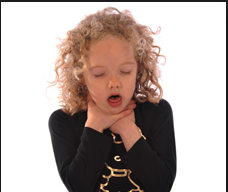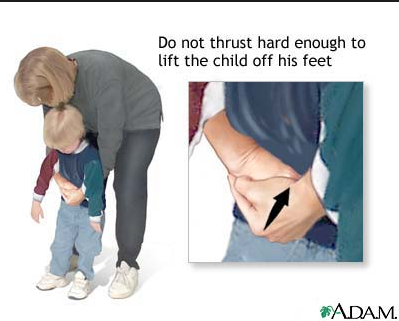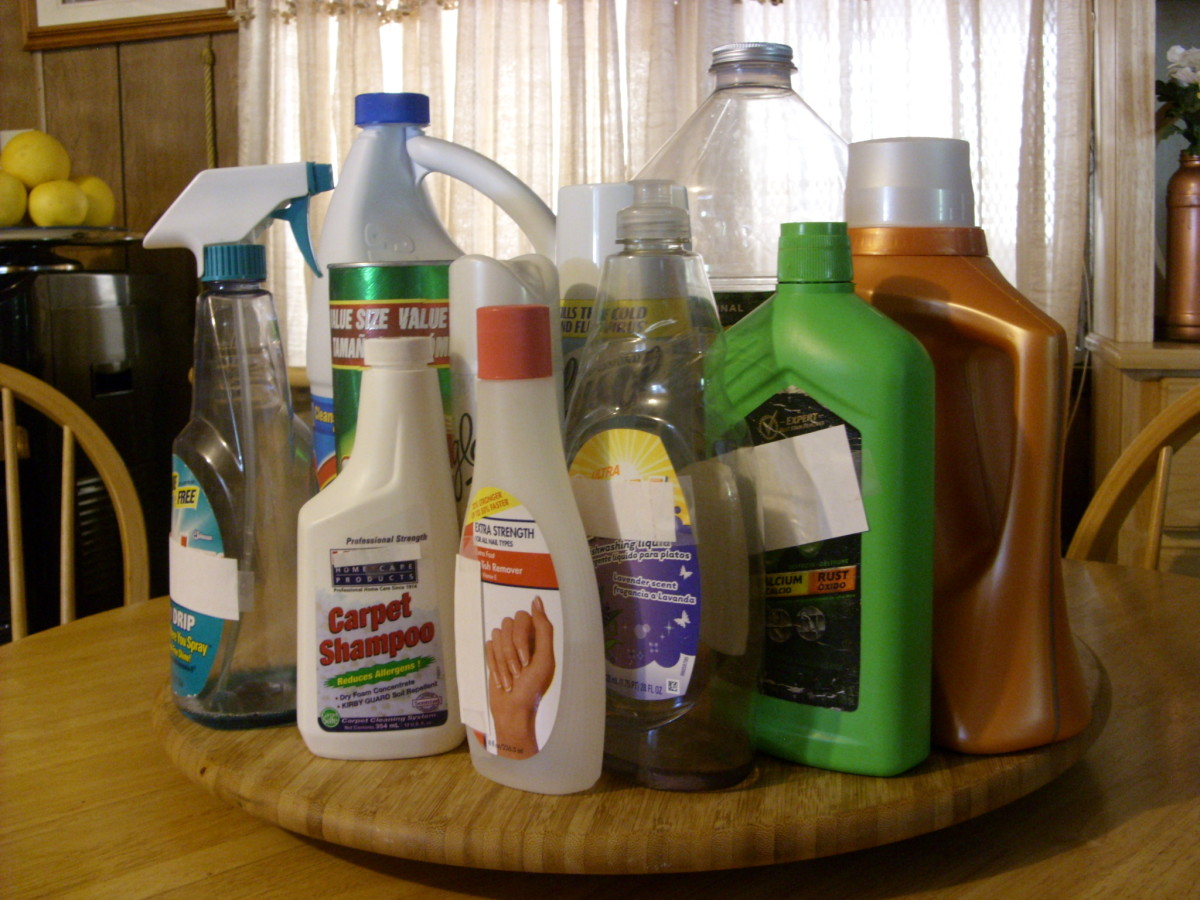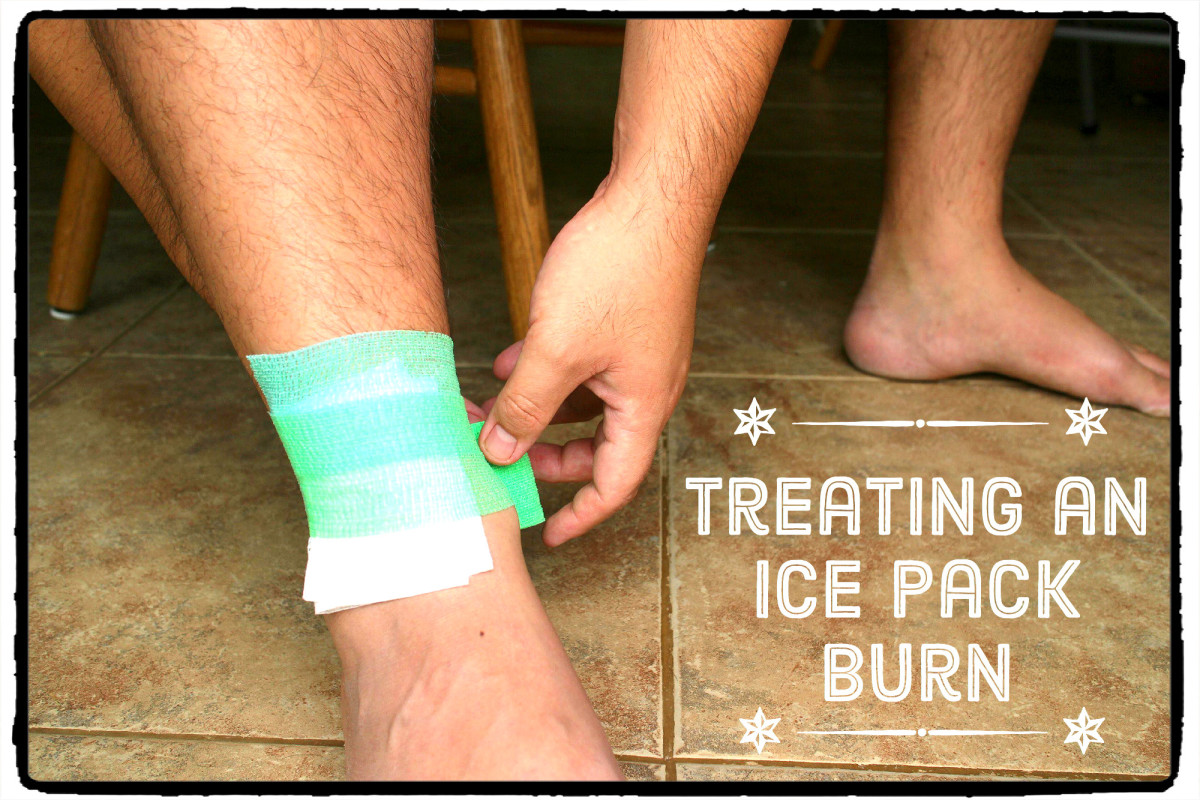How to prevent choking in children – First Aid


Choking is a breathing emergency. It is a condition when our normal breathing function is constricted due to blocking of the airways to the lungs, as with food or other foreign objects. Choking usually is a result of injury or illness.
In real life situation, there are two different kinds of choking that we may encounter and probably have to deal with:
1. Conscious – a conscious choking person may become unconscious while you are giving first aid.
2. Unconscious – unconscious person, who you found out through your first aid actions, has blocked his/her airway.
Giving first aid for choking depends on the person’s age and as a guideline in the first aid of choking, the term child is referring to a person between one year and eight years old.
Signs of choking:
The universal sign for choking is hands clutched or around the throat. If a child is choking and conscious, he/she may be looking panicked, unable to talk, cough (forcefully) or breathe and lips turning bluish or dusky and may possibly lose consciousness.

6 Ways To Prevent Choking In Children:
1. Check your house regularly for items that could cause choking specially if you have children on the crawling stage. Make sure you check under the furniture and between cushions on the sofa or chairs. Common hazard: Coins.
2. For children under four years old, don’t feed them with food like thickly spread peanut butter, grapes, popcorn, hotdogs, nuts and any round candies.
3. For older children, you should cut the hotdogs in half lengthwise before serving it.
4. Teach your children not to run or dance or move about when eating.
5. Believe it or not, balloons are common cause of choking. Never leave children unattended while playing and specially when playing with balloons.
6. Never leave children unattended while they are eating. Always watch and supervise them.
Your first Aid:
1. Determine if the obstruction is mild or severe by listening to how the choking person speaks.
2. If the person, in this case a child can speak, breathe or cough, don’t touch him/her. Ask them to try to cough up and spit out the object. Immediately seek for medical help, if this partial obstruction lasts for more than a few minutes.
3. Use abdominal thrusts and try to dislodge the blockage, if the child is unable to cough.
Armed yourself with knowledge. Watch here.

How to perform abdominal thrusts:
- Stand or kneel behind the child, so you are at the right height and ready to support them, in case they become unconscious.
- Position your hands on top of the hipbones and place your fist midline, just above the other hand to administer abdominal thrust.
- Hold the fist with the other hand and press inward and then move upward (to a “J”) giving a bit of pressure or forceful thrusts.
- Keep in mind that your intention to give the abdominal thrusts is to get rid of the object blocking the airway.
- Use your fist and make sure that you don’t press against the ribs of the child with your forearms.
- Continue giving abdominal thrusts until the airway is cleared or the child has become unconscious.
- Once the object is removed, continue to look after the child. If the child becomes unconscious and unable to spit out the object, lower him/her to the ground. Ask someone to get immediate professional medical assistance. If you are trained to use AED (Automated External Defibrillator) and if one is available, administer.
- Make sure to protect the head and the neck of the child as you lay him/her to the ground.
- If you are by yourself, perform five cycles of attempted ventilations and compressions for approximately 2 minutes before drawing for EMS.
- Open the mouth and check for the foreign object. Remove any foreign object you see.
- Push back on the forehead of the child and lift the jaw. Put your ear close to the child’s mouth and nose to check for his/her breathing. Also check for the chest movement and listen to any murmurs or sounds of breathing.
- Open the mouth (airway) and ensure that that child is breathing for up to 10 seconds.
Did you find this hub useful?
Disclaimer:
Please note that if the choking is due to the swelling of the airway from some allergy reactions, injury or infection, abdominal thrusts will NOT work. CALL 911 immediately.
N.B. Author is NOT a medical practitioner. However, she is a certified First Aider and holds a degree in Medical Science. This information is only intended for First Aid purposes. Reader’s discretion is advised in using the techniques.
Copyright@ CrisSp~TM/03-2013. Fearless but not Heartless!

Other health related hubs by the author:
- Vision Perfection - Early signs of Presbyopia
As the old cliché "prevention is always better than cure". Eye problems, if not detected early could be a signal of a more serious eye concerns or impairment. Don't delay, see your eye doctor immediately! - Wild on Health - What is your Body Mass Index?
Annual physical check up allow us and our doctor to review all the essential aspects of our health-our past and present medical history. It's also a good way to develop a good rapport with our doctor. When was your last medical check?
© 2013 CrisSp








